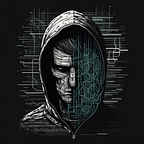Capture the Flag (CTF)
If you are a gamer like myself, you may have encountered Capture the Flag (CTF) game modes in video games like Battlefield and Call of Duty. In these game modes you are given an objective to find and retrieve a flag. CTF is similar to this in cybersecurity.
Capture the Flag, which is commonly abbreviated as CTF are challenges that put to test an individual or a group of individual’s skills at solving problems in a fun and rewarding way. CTF is an objective oriented challenge that you must solve to receive a flag that confirms you achieved the objective. These challenges are typically done in a command line terminal. While you can do CTF challenges in the Windows or Mac command line terminals, they are commonly done in the command line terminal on a Linux virtual machine. It is important to note that many commands differ from Windows, Mac, and Linux. What is great about CTF is it is an exciting and practical way to learn how to put command line arguments to use. However, if you are a more advanced user CTF is an excellent way to evaluate and further enhance your skills.
For a more in depth look at CTF information here is a link that discusses them further. https://www.infosectrain.com/blog/a-beginners-guide-to-capture-the-flag-ctf-hacking
My experience with CTF challenges has been awesome! As I said before they are a great way to learn and gain more practical experience with commands in the Linux terminal. When learning new commands in Linux it is much more helpful to have these challenges to understand how and when the commands are used. Doing the CTFs also gives you the experience of navigating Linux in the command line and helps you become more familiar with commands as a lot of the memory comes with repetition of use.
When it comes to learning new command line tools by way of CTF my advice is to just keep chipping away at the challenge. Some challenges are pretty straightforward and easy. On the other hand, there are definitely some challenges that will give you some serious problems. If you get stuck do not give up! Think to yourself what is the challenge asking and looking for. I tend to think how do I get from point A to point B and what must I do to navigate through the problem.
On the seriously gnarly challenges there is no shame in moving on to the next challenge and coming back to the one that has stumped you later. Even shutting down or putting the computer to sleep and taking a break for a while to come back to the problem later helps. All that said, do not give up. Sometimes you are so close to solving the challenge, but maybe you are entering something wrong or giving the wrong option for a command.
In my experience I have definitely taken breaks. However, I will find myself still thinking about the challenge, what I need to do to solve it, and what I am doing wrong. I have even gone to take a break just to change my mind and go right back to attempting to solve a CTF. I have gone to sleep as well as woken up thinking about CTFs that were evading my solving. Sometimes the challenges can be quite the struggle to solve, but with struggle comes progress and without a doubt you will learn a great deal from some of the challenges that give you the most trouble. CTF challenges can be extremely difficult, especially for a beginner like myself. but they are also a lot of fun and incredibly rewarding once solved.
Another piece of advice is that Google, Bing, and DuckDuckGo (my personal favorite) are all great search engines that can help when you get stuck. There are many Linux forums where you can find a question from someone who ran into the same struggle as you. Also, the man (manual) and help options in the Linux terminal are also excellent resources to help when the CTF struggles are getting overwhelming. Plus, it is important to know how to navigate and use the man and help options in the terminal because they are such a helpful and useful resource.
Fortunately, there are many free resources for beginners who are interested in seeing what CTFs are like and trying them out. In fact, my school, Fullstack Academy has gotten a few of its CTF challenges from one of the free sources. Three free resources for CTFs comes from https://overthewire.org/wargames/ https://ctflearn.com/ and https://www.hacker101.com/ however, the latter two websites require creating an account where the former does not require an account. If you have not installed Linux it looks like the websites do not provide an online terminal. Therefore, you will need to install Linux. My recommendation is to install Kali Linux since it is a Linux designed for security and will have many pre installed applications that you may need to solve the CTF challenges.
I hope this entry is informative and helpful to all that come across it. If there are any comments or suggestions feel free to do so as I am happy to receive feedback.
Thanks for reading,
Zer0rigin
